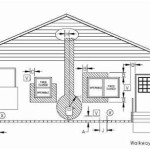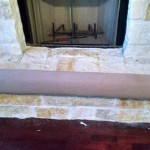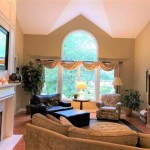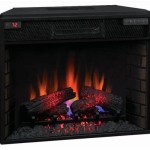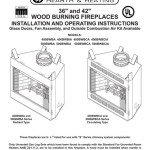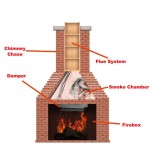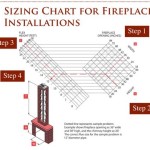Heat & Glo Gas Fireplace Troubleshooting: A Comprehensive Guide
Gas fireplaces offer a convenient and aesthetically pleasing alternative to traditional wood-burning fireplaces. Heat & Glo is a well-known manufacturer providing a range of gas fireplace models. However, like any mechanical device, gas fireplaces can experience operational issues. This article provides a comprehensive guide to troubleshooting common problems encountered with Heat & Glo gas fireplaces, offering practical steps for identifying and resolving malfunctions. While some issues can be addressed by homeowners, it is crucial to remember that working with gas appliances involves inherent risks. If there is any doubt about one's ability to safely troubleshoot or repair a gas fireplace, a qualified technician should be consulted.
Before initiating any troubleshooting process, ensure that the gas supply to the fireplace is turned on and that the pilot light, if applicable, is lit. Consult the Heat & Glo owner's manual for specific instructions related to the particular model. The owner's manual often contains detailed diagrams, troubleshooting charts, and safety guidelines that are essential for accurate diagnosis and safe operation.
Pilot Light Issues: Extinguishing or Failing to Ignite
A common problem encountered with gas fireplaces is trouble with the pilot light. The pilot light is a small, continuous flame that ignites the main burner when heat is called for. If the pilot light repeatedly extinguishes or fails to ignite initially, several factors could be at play.
One potential cause is a dirty or partially obstructed pilot orifice. The orifice is a small opening that meters the flow of gas to the pilot assembly. Dust, debris, or even spider webs can accumulate in the orifice, restricting gas flow and causing the pilot light to weaken or extinguish. To clean the orifice, first shut off the gas supply to the fireplace. Then, carefully remove the pilot assembly cover. Using a small wire or compressed air, gently clean the orifice. Avoid enlarging the orifice, as this can affect the pilot flame's characteristics and potentially lead to unsafe operation. After cleaning, reassemble the pilot assembly and attempt to relight the pilot light.
Another possible reason for pilot light problems is a faulty thermocouple or thermopile. These are safety devices that sense the presence of the pilot flame and allow the main gas valve to open. If the thermocouple or thermopile is damaged or not generating enough voltage, the gas valve will close, extinguishing the pilot light. To test the thermocouple/thermopile, a multimeter is needed. With the pilot light lit, measure the voltage output of the thermocouple/thermopile. The owner's manual will specify the correct voltage range. If the voltage is below the specified range, the thermocouple/thermopile needs to be replaced. This task is best performed by a qualified technician.
Draft issues can also cause the pilot light to extinguish. Negative air pressure within the house, caused by exhaust fans, improperly sealed windows, or other appliances, can pull air away from the fireplace, disrupting the pilot flame. Check for drafts around the fireplace and address any sources of negative air pressure. Ensure that the fireplace venting system is properly installed and not obstructed.
Finally, a malfunctioning gas valve can prevent the pilot light from staying lit. The gas valve controls the flow of gas to the pilot and main burner. If the valve is not functioning correctly, it may not provide adequate gas pressure to the pilot light. This will usually require replacement by a qualified technician.
Main Burner Ignition Failure or Erratic Operation
If the pilot light is functioning correctly, but the main burner fails to ignite or operates erratically, the issue likely lies within the ignition system or gas supply to the main burner.
A common cause of ignition failure is a faulty igniter. Heat & Glo fireplaces typically use either a spark igniter or a hot surface igniter to ignite the main burner. A spark igniter generates a spark near the burner to ignite the gas. A hot surface igniter heats up until it glows, igniting the gas when it comes into contact. If the igniter is not producing a spark or not heating up properly, the main burner will not ignite. Inspect the igniter for any signs of damage or corrosion. Clean the igniter with a soft cloth. If the igniter is still not functioning correctly, it may need to be replaced. This task is best left to a qualified technician, as it involves working with electrical components and gas lines.
Another potential cause is a blockage in the main burner ports. Over time, dust, debris, or carbon deposits can accumulate in the burner ports, restricting gas flow and preventing proper ignition. Clean the burner ports with a wire brush or compressed air. Be careful not to damage the burner ports during cleaning. After cleaning, reassemble the burner and attempt to ignite the fireplace.
Insufficient gas pressure can also cause ignition failure or erratic operation. If the gas pressure to the fireplace is too low, the main burner may not receive enough gas to ignite properly, or the flame may be weak and unstable. A qualified technician can measure the gas pressure at the fireplace to ensure that it is within the specified range. If the gas pressure is too low, the gas supply system may need to be inspected and repaired.
Furthermore, the flame sensor, also called a flame rectification sensor, might be failing. This sensor detects the presence of the flame on the main burner. If it doesn't detect the flame, it will shut off the gas to the main burner as a safety precaution. If the sensor is dirty or faulty, it may erratically cut out, causing flame instability. Clean or replace the sensor as needed.
Unusual Odors or Noises
Strange smells or noises emanating from the gas fireplace should be addressed immediately, as they could indicate a serious problem. These issues can range from simple fixes to potentially dangerous situations.
A common complaint is a burning smell, especially when the fireplace is first used after a period of inactivity. This is often due to dust and debris that has accumulated on the fireplace components. The smell should dissipate after the fireplace has been running for a short time. However, if the burning smell persists or is accompanied by smoke, shut off the fireplace and inspect it for any signs of burning wires or other components. Contact a qualified technician for assistance.
A gas odor is a serious concern that warrants immediate attention. If a gas odor is detected, immediately shut off the gas supply to the fireplace and evacuate the premises. Contact the local gas company or a qualified technician to investigate the source of the leak and make necessary repairs. Do not attempt to operate the fireplace until the leak has been repaired and the area has been properly ventilated. The use of a combustible gas detector is highly recommended to identify gas leaks with greater accuracy. Regular inspection of gas lines and connections for leaks using a soapy water solution should also be implemented as a preventative measure.
Unusual noises, such as popping, clicking, or hissing, can also indicate potential problems. Popping or clicking noises may be caused by expansion and contraction of metal components as the fireplace heats up and cools down. These noises are usually harmless, but if they are excessive or accompanied by other symptoms, it is best to have the fireplace inspected by a qualified technician. Hissing noises could indicate a gas leak, which should be addressed immediately as described above. If a hissing noise is heard even after shutting off the gas supply, the main gas line shut-off valve may be faulty or improperly closed.
Other noises could indicate issues with the blower fan, if the fireplace is equipped with one. Squealing or grinding noises from the blower fan may indicate that the bearings are worn out or need lubrication. Inspect the blower fan and lubricate the bearings or replace the fan as needed. A rattling noise may be caused by loose components or debris in the blower fan housing. Remove any debris and tighten any loose components.
Regular maintenance, including cleaning the burner assembly, inspecting the venting system, and checking for gas leaks, can help prevent many of these problems from occurring. Following the manufacturer’s recommendations for maintenance and operation is crucial for ensuring the safe and reliable operation of a Heat & Glo gas fireplace.

Heat Glo Gas Fireplace Troubleshooting

Heat Glo Gas Fireplace Troubleshooting

Heat Glo Gas Fireplace Troubleshooting

Heat Glo Gas Fireplace Troubleshooting

Heat Glo Fireplace Turns On And Off Here S What To Do Upgradedhome Com

Using Your Heat Glo Gas Fireplace During A Power Outage

Heat Glo 6k 8k Modern Direct Vent Gas Fireplace Instructions

Heat N Glo Remote Control Not Working 5 Quick Fixes Cottage Fires

Heat Glo Slimline Sl Gas Fireplace Fireside Hearth Home

Heat Glo 8k Series Gas Fireplace Fireside Hearth Home
Related Posts

